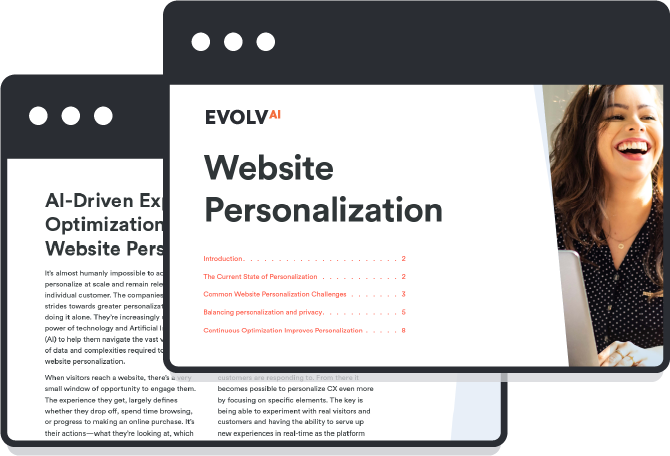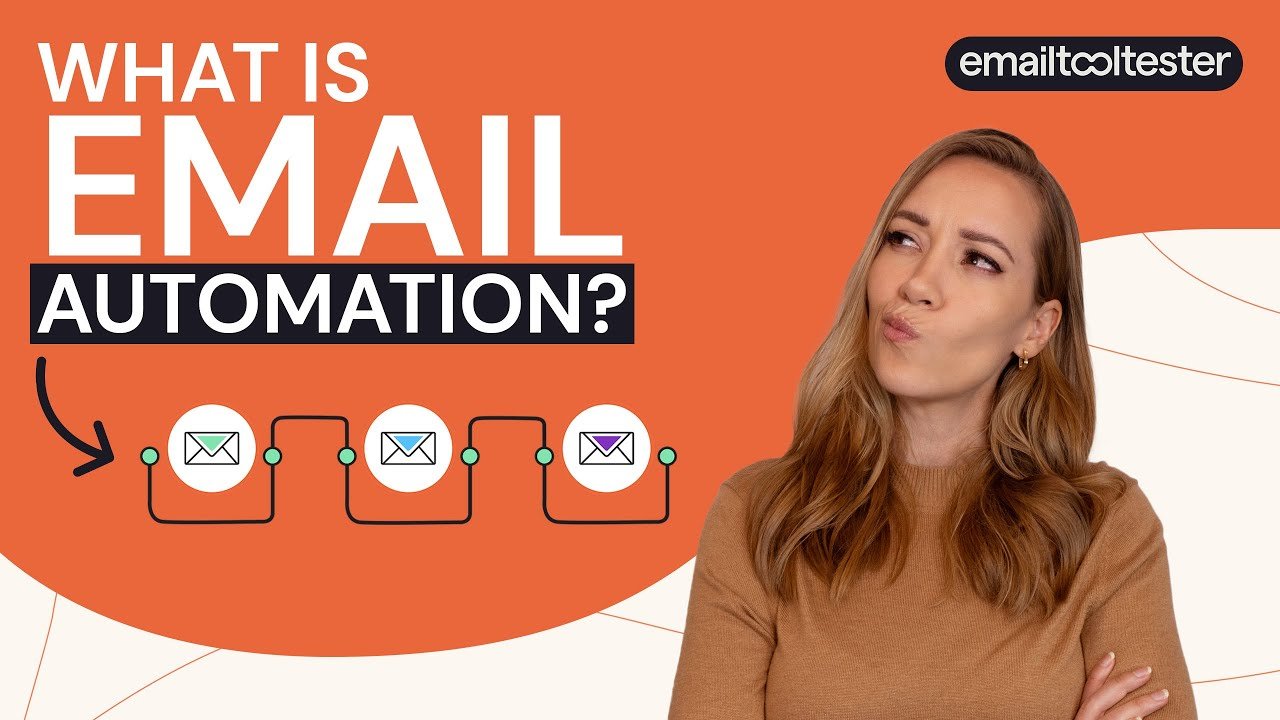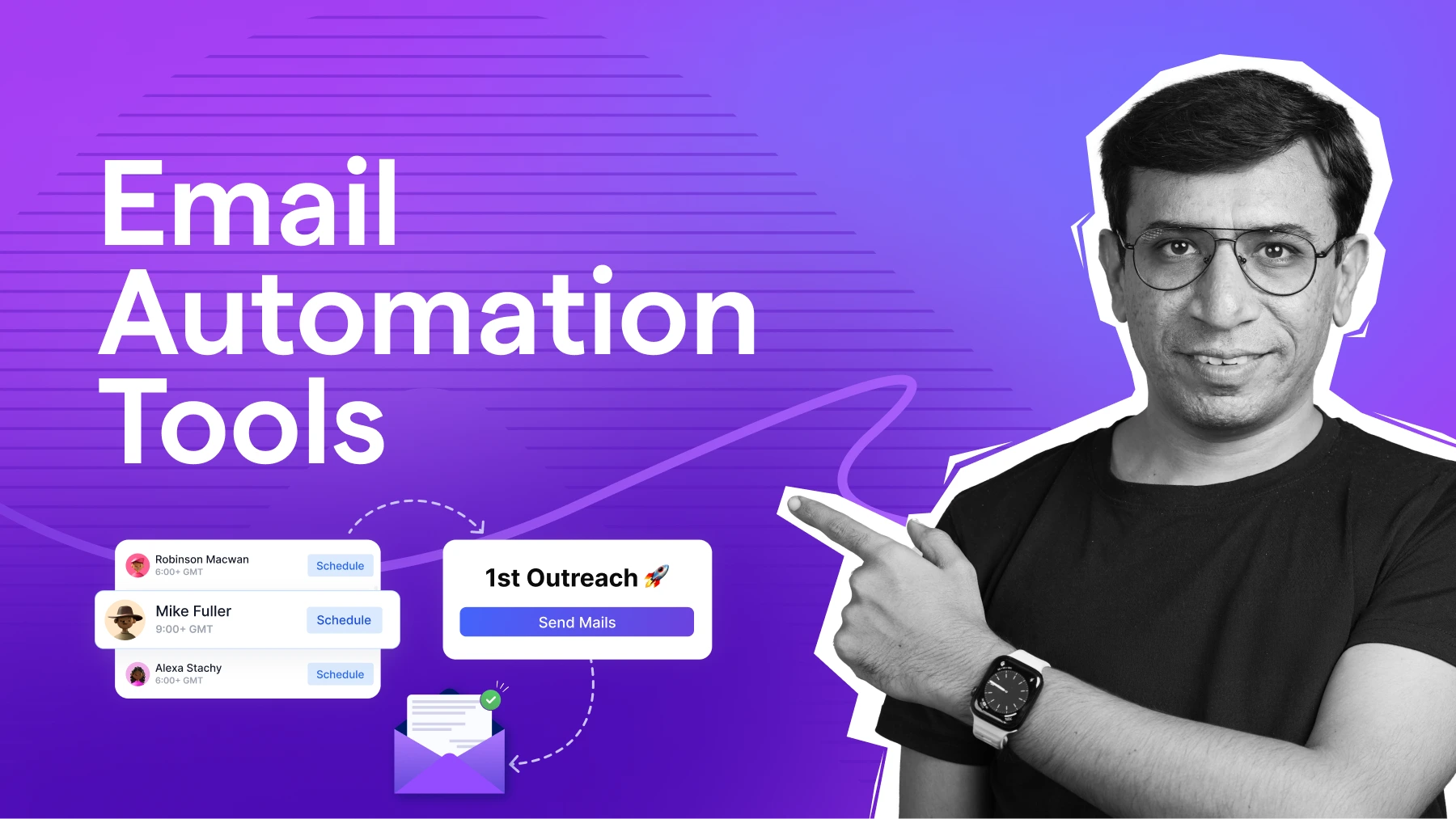Automated Email Systems: The Ultimate Guide for Beginners
In this whirlwind of our modern digital age, an automated email system stands out as an essential asset for companies striving to uphold seamless communication. These systems empower businesses to dispatch tailored messages to customers, clients, and potential leads, guaranteeing that crucial information reaches its audience promptly and smoothly. In this guide, we will explore the nuances of automated email systems, shedding light on their importance, advantages, various types, and tips for setting them up effectively.
Introduction to Automated Email Systems

Automated email systems are software applications designed to automatically send scheduled emails based on pre-defined triggers or conditions. By automating various aspects of email communication, businesses can improve efficiency, enhance customer engagement, and streamline their marketing efforts. These systems have revolutionized how organizations interact with their audience, enabling personalized communication at scale.
Definition and Overview
An automated email system functions by sending out emails without manual intervention. This is accomplished through sophisticated algorithms and workflows set up within email automation platforms.
The key characteristic of these systems is their ability to trigger emails based on specific user actions or predefined timelines. For example, when a user signs up for a newsletter, they automatically receive a welcome email. Similarly, if a customer abandons their shopping cart, an automated reminder email can be sent to prompt them to complete their purchase.
Importance in Modern Communication

The rise of digital communication has led to a monumental shift in consumer expectations. Today’s consumers anticipate immediate responses and personalized content. Automated email systems fulfill this need by providing timely and relevant communication tailored to individual preferences. They not only save time but also reduce the chances of human error, ensuring that important messages reach recipients as intended.
Moreover, utilizing an automated email system allows businesses to nurture leads, build trust, and foster long-term relationships with customers. In essence, these systems are critical drivers of effective communication strategies.
Key Components of an Automated Email System
To better understand how automated email systems work, it is essential to recognize their key components:
- Email Automation Software: This is the backbone of any automated email system. Popular tools include Mailchimp, HubSpot, and Constant Contact, each offering unique features tailored to different business needs.
While tools like GoHighLevel offer comprehensive solutions for automation and CRM, other platforms like Mailchimp stand out for their simplicity and versatility, especially for beginners. Let’s take a closer look at what Mailchimp brings to the table!
- Triggers and Workflows: These define how and when emails are sent. Triggers can be actions taken by users (e.g., signing up, making a purchase) or time-based events (e.g., reminders for subscription renewals).
- Segmentation: This entails categorizing your audience based on various criteria like demographics, behaviors, or preferences. Segmentation is vital for sending targeted messages that resonate with specific groups.
- Analytics: Monitoring the performance of automated emails is crucial. Analytics provide insights into open rates, click-through rates, and overall engagement, helping businesses continuously refine their email strategies.
By combining these components strategically, organizations can leverage automated email systems to optimize communication and achieve desired outcomes.
Benefits of Implementing Automated Email Systems

Automated email systems bring a wealth of benefits that profoundly influence business operations and the way companies connect with their customers. Let’s delve into some of these vital advantages.
Boosted Efficiency and Productivity
A key perk of automated email systems is their ability to significantly enhance efficiency. By taking over the tedious task of manual email dispatch, automation allows employees to reclaim precious time for more critical responsibilities.
Rather than crafting each message from scratch, teams can design templates and set up workflows that trigger automatic emails based on user interactions or established schedules. This not only streamlines communication but also elevates productivity throughout various departments.
By automating repetitive correspondence tasks, organizations can guarantee prompt follow-ups on potential leads, timely responses to customer queries, and consistent delivery of routine updates. The outcome? A nimble organization that’s quick to meet customer demands.
Improved Customer Engagement and Retention
Another significant advantage of utilizing automated email systems lies in their prowess to enhance customer engagement and loyalty. Well-timed, personalized emails result in better open and click rates, ultimately boosting overall engagement.
For example, businesses can dispatch tailored content based on users’ interests and behaviors. By providing relevant insights, organizations can build stronger connections with their clientele, fostering greater customer loyalty.
Additionally, these automated systems can be designed to reconnect with customers after a purchase, seeking feedback or suggesting complementary products. Such proactive outreach illustrates to customers that their views are valued, thus reinforcing brand loyalty and promoting repeat business.
Personalization and Targeting Abilities

In an era where consumers are eager for personalization, automated email systems empower businesses to effectively respond to individual preferences. Utilizing data gathered from user interactions, organizations can categorize their audience and customize content accordingly.
This level of personalization goes beyond just using recipients’ names; it includes recommending products based on their past purchases, sending them birthday wishes, or informing them about restocked items they previously showed interest in.
When customers receive information that is relevant to them, they are much more inclined to engage, whether that means making a purchase, clicking a link, or sharing the content with others. Thus, automated email systems bolster targeting efficiency and propel successful marketing campaigns.
Enhanced Tracking and Analytics
In contrast to traditional email methods, automated email systems come packed with powerful analytics and tracking features. Businesses can evaluate campaign effectiveness by examining metrics like open rates, click-through rates, conversion rates, and unsubscribe rates.
These insights not only gauge campaign success but also guide future strategies. Organizations can identify trends, preferences, and challenges within their audience, enabling them to fine-tune their messaging and target accordingly.
Ongoing monitoring of email performance ensurbusinesses stay adaptable, pivoting in response to shifts in audience behavior and preferences over time. This analytical approach sets the groundwork for thriving email marketing initiatives.
Types of Automated Email Systems

Grasping the various categories of automated email systems is key to choosing the best method for your brand. Each category has its own distinct functions and meets particular communication demands.
Transactional Emails
Transactional emails are triggered by specific actions taken by users, often related to a transaction or account activity. Examples include order confirmations, shipping alerts, password resets, and welcome messages upon account creation.
These emails are usually urgent and fulfill significant practical roles. Their main goal is to furnish recipients with essential information linked to their engagements with the business.
Given that transactional emails generally enjoy higher engagement levels than promotional ones, companies should ensure they are well-crafted, informative, and consistent with their branding.
Marketing Automation Emails
Marketing automation emails cover a wide array of promotional messages aimed at engaging and converting potential leads. This segment includes newsletters, product revelations, special deals, and invitations to events.
Often part of a broader campaign, marketing automation emails can be tailored based on user actions, such as website interactions or past email responses.
Businesses have the ability to establish comprehensive marketing automation funnels that deliver a sequence of emails over time to nurture prospects, educate clients, or highlight new products. These emails are crucial for sustaining lasting relationships with subscribers and boosting sales.
Drip Campaigns

Drip campaigns represent a particular form of marketing automation email that dispatches a series of messages to subscribers over a specific timeframe. The objective is to nurture leads through the sales funnel by offering valuable content and guiding them toward making a purchase.
For instance, a drip campaign might kick off with a welcoming email, followed by educational material, customer testimonials, and ultimately a promotional proposal. Each message builds on the last, creating a seamless journey for the recipient.
The magic of drip campaigns lies in their capacity to provide pertinent information at just the right moments, enhancing conversion chances without overwhelming the audience.
Follow-Up Emails
Follow-up emails are vital for sustaining engagement and fostering connections with customers following initial contact. These messages are typically sent after significant interactions, such as a purchase, webinar attendance, or consultation.
The objectives of follow-up emails are varied. Businesses can utilize them to express gratitude to customers, solicit feedback about their experiences, or present relevant offers aligned with their interests.
Dispatching thoughtfully timed follow-up emails showcases attentiveness and reinforces a favorable perception of the brand. It also offers the perfect moment to upsell or cross-sell additional products or services.
How to Set Up an Automated Email System

Implementing an automated email system requires careful planning and execution. Below are the steps you can take to set up an effective system for your business.
Selecting the Right Email Automation Software
The first step in establishing an automated email system is choosing the appropriate software. With many options available, it’s essential to consider the specific needs of your business, the size of your audience, and your budget.
A good email automation platform should offer user-friendly interfaces, robust automation features, customizable templates, and comprehensive analytics. Some popular tools include Mailchimp, SendinBlue, Klaviyo, and HubSpot.
Researching reviews and taking advantage of free trials can help you determine which software aligns best with your goals. Additionally, ensure that the chosen platform integrates seamlessly with your existing tools, such as Customer Relationship Management (CRM) systems or e-commerce platforms.
Creating Effective Email Templates
Once you’ve selected a software platform, it’s time to design your email templates. High-quality templates are crucial for capturing attention and providing a consistent brand experience.
Consider the following aspects when creating your email templates:
- Visual Appeal: Use eye-catching designs, images, and colors that align with your brand identity. Ensure that your templates are mobile-friendly, as many users access emails on their smartphones.
- Content Structure: Organize content with clear headings, bullet points, and calls-to-action (CTAs) that guide recipients toward desired actions.
- Personalization: Incorporate dynamic fields that personalize emails, such as including the recipient’s name or tailoring product recommendations based on their past purchases.
Creating a library of reusable email templates can save time and maintain consistency across campaigns.
Segmenting Your Audience
Effective segmentation is crucial for maximizing the impact of automated email systems. By dividing your audience into meaningful groups, you can further personalize content and increase engagement rates.
Consider segmentation criteria such as:
- Demographics: Age, gender, location, and income can influence consumer preferences and behavior.
- Behavioral Data: Analyzing user interactions, such as website visits, purchases, or email engagement, can inform targeted messaging.
- Purchase History: Segmenting based on previous buying patterns enables you to present relevant products and offers.
Utilizing segmentation strategies allows businesses to create tailored campaigns that resonate with specific customer groups while improving overall effectiveness.
Establishing Triggers and Workflows
After segmenting your audience, the next step is to define the triggers and workflows that will dictate how and when emails are sent.
Begin by determining which events should trigger automated emails. Common triggers include actions such as:
- Signing up for a newsletter
- Completing a purchase
- Abandoning a shopping cart
- Reaching a certain anniversary with the brand
Once you’ve identified the triggers, you can set up workflows that outline the sequence of emails to be sent, their timing, and any conditions that may affect delivery.
Testing workflows before full implementation ensures that everything functions smoothly and helps identify areas for improvement. Regularly review and adjust your triggers and workflows based on campaign performance and audience feedback.
Wrap-Up Time!

So, to put a cherry on top, getting hip with an automated email system can seriously jazz up how businesses chit-chat with their customers. By riding the automation wave, companies can totally ramp up their efficiency game, keep their audience entertained, serve up personalized goodies, and snag some nifty insights with analytics!
With a carnival of automated email systems out there, picking the right one that fits your quirky needs is absolutely crucial! Getting everything set up properly – like choosing the perfect software, whipping up snazzy templates, splitting audiences like a magician, and figuring out those fancy triggers and workflows – is the secret sauce for email comms that actually work.
As businesses keep shimmying and shaking in this crazy digital marketing world, jumping on the automated email train will be key to building strong customer bonds and enjoying a growth party in the competitive marketplace!




